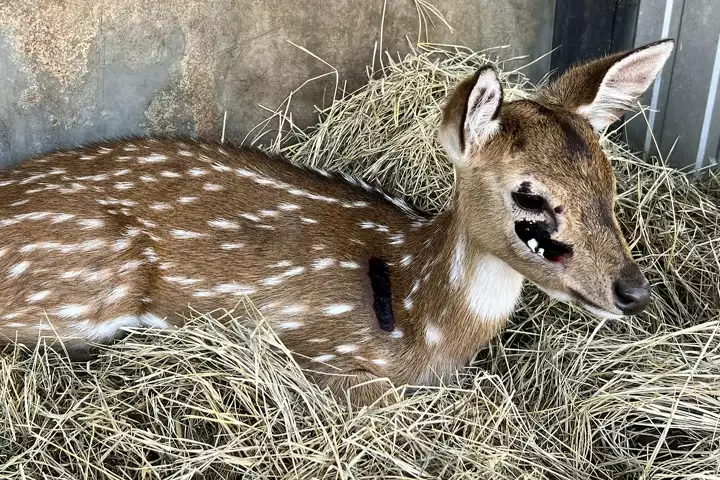JAKARTA — A coalition of civil organizations has launched a tool to support local NGOs and community groups in Southeast Asia to secure financing for nature-based solutions projects.
The tool was launched at the just-concluded COP28 U.N. climate summit in Dubai by the Southeast Asia Climate and Nature-based Solutions (SCeNe) Coalition.
The members of the SCeNe Coalition are Conservation International, The Nature Conservancy, IDH–the Sustainable Trade Initiative, BirdLife International, the Wildlife Conservation Society, Singapore-based Mandai Nature, World Resources Institute (WRI) Indonesia, and WWF-Singapore.
The coalition says it developed the tool because it saw that the Southeast Asia region had lots of potential for nature-based solutions (NbS) projects. NbS are defined by the IUCN as “actions to protect, sustainably manage, and restore natural or modified ecosystems,” such as restoring wetlands, planting trees, creating green roofs, and developing urban parks.
If implemented effectively, NbS could aid humanity in curbing global climate change, biodiversity loss and other rapidly escalating planetwide environmental problems, while improving people’s welfare at the same time.
Globally, NbS has been recognized as one of the keys to achieving the targets of capping global warming below 1.5° Celsius (2.7° Fahrenheit) above pre-industrial levels. It was included within the final cover decision of the COP27 U.N. climate summit held in November 2022 in Egypt, and figured notably in two targets of the Kunming-Montreal Global Biodiversity Framework (GBF) at the U.N. biodiversity conference in December 2022, held in Canada.
Southeast Asia is known for its rich biodiversity, accounting for 20% of all known plant and animal species in the world. The region also boasts the highest stores of “blue carbon,” with several countries being home to significant areas of mangrove swamps and seagrass meadows. It’s also known as a soil carbon powerhouse, with 500 million hectares (1.24 billion acres) of tropical forests — an area one and a half times the size of India — capable of absorbing vast amounts of carbon dioxide.
More than 650 million people live in Southeast Asia and depend on nature for their livelihoods. Yet despite the wide recognition of the significant benefits and ecosystem services that NbS provide at different levels and scales, the monetization of these services remains challenging in Southeast Asia.
“Southeast Asia has a huge potential to sequester and remove carbon in the atmosphere,” WRI Indonesia NbS financing senior program lead Dewi R. Sari said at a recent online press conference. “[But] how come the amount of funding that we can deliver to protect the nature is still very limited?”
Communities and local NGOs who advocate for them are struggling to tap into NbS funding as they have limited capacity for long-term NbS projects, she said. These include frontline organizations and communities, those that work directly to protect, preserve and restore ecosystems.
“NbS are a solution to sequester carbon, and so we have to be able to measure how much carbon is being sequestered so that the funding can be delivered,” Dewi said. “But unfortunately, frontline organizations don’t know where to begin. They don’t know how to measure the impacts [of their work]. They don’t receive a lot of support.”
The new NbS tool developed by the coalition aims to tackle these problems. It boasts three main features, the first of which is an interactive map where users can analyze spatial layer information. The second is a data analyzer, in which users can select an area of interest by drawing a polygon or uploading a shapefile in the interactive map. The tool will then automatically generate data from the selected point of interest. The data will contain information about the existing condition of the area, such as the size, location, deforestation risk, drivers of deforestation, list of wildlife species, potential for carbon sequestration, and population and livelihoods of the people.
The tool will then calculate the potential benefit derived from implementing NbS projects in the selected area. To obtain this data, users have to choose the type of intervention that will be carried out — avoided deforestation or ecosystem restoration — along with the parameters that need to be calculated. The users will also have to determine how long the project will be implemented for.
The set of data will be displayed in narrative form to make it easier for frontline organizations and investors to understand.
This whole analysis process is needed to determine how feasible an NbS project is, something that usually takes a lot of time, money and effort.
If the users are satisfied with the results of the data analysis, they could proceed with generating the project document.
The third feature is project management. Using this feature, the users can oversee all the project proposals they’ve created using the data analyzer and perform actions such as viewing, adding, removing and editing projects.
Through these features, local NGOs and communities can save a lot of time and money, given that they would otherwise have had to pay for consultants to collect data such as carbon potential and biodiversity, Dewi said. In other cases, they already have the data but don’t know how to input them into project documentation to start the project, she added.
While the tool isn’t the first of its kind in the world, it’s the first that focuses on the Southeast Asia region. And while most existing NbS tools charge users for some of their features, particularly for measuring potential carbon sequestration, the NbS tool developed by SCeNe is completely free, Dewi said.
This will allow local NGOs and communities to spend more money on activities that have a direct impact on the environment, such as reforestation, rather than on doing analysis and documentation, she said.
“Without technology, all data documentation is done manually and thus we need to pay people to collect data, document them and check them again. We might need to hire three people [to do that]. With technology, we only need to hire one person to do ground-truthing,” she said. “The rest of the money can be used to pay locals to plant trees.”
By being openly accessible to anyone for free, the NbS tool aims to democratize access to knowledge, technical assistance and climate finance, according to Martin Callow, co-chair of the SCeNe coalition and regional director of Southeast Asia at the Wildlife Conservation Society.
This, he added, should allow “frontline organizations across Southeast Asia [to] engage in NbS projects with full awareness and consent.”
And the use of the tool isn’t limited just to NbS projects, Dewi said. Local NGOs and communities can also use it for other things that need data documentation and analysis, she said.
For example, an environmental NGO in Indonesia’s South Sumatra province, the Hutan Kita Institute (HaKI), said it could use the NbS tool to apply for the Indonesian government’s social forestry program.
The program is one of the largest socioenvironmental experiments of its kind, aiming to reallocate 12.7 million hectares (31.4 million acres) of state forests to local communities and give them the legal standing to manage their forests.
To apply for the program, Indigenous and local communities need to prepare certain documentation, which is where the NbS tool could come in handy, according to Dedi Permana, the executive director of HaKI.
“The NbS tool will help with processing and collecting data, so it can be better documented for related stakeholders who will manage sustainable social forestry after the permit,” he said.
The SCeNe Coalition says it plans to keep developing the tool by adding features and updating the database, Dewi said. For now, the tool only has a data set for a handful of Southeast Asian countries, including Indonesia and the Philippines.
The developers say they also plan to work with a number of local NGOs and communities to help them use the tool effectively, starting in the first quarter of 2024, Dewi said.
“We will start with two or three pilot projects, most likely in Indonesia and the Philippines,” she added.
This article by Hans Nicholas Jong was first published by Mongabay.com on 13 December 2023. Lead Image: otum Sakor National Park in Cambodia is habitat to a considerable population of the endangered pileated gibbon (Hylobates pileatus). Image by วิชิต กองคำ via Wikimedia Commons (CC BY-SA 4.0).
What you can do
Help to save wildlife by donating as little as $1 – It only takes a minute.







Leave a Reply